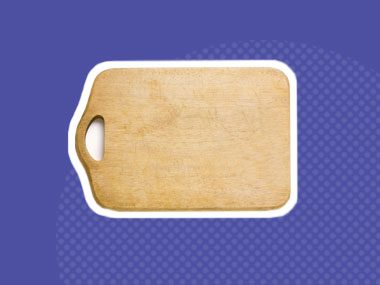
Your cutting board
University of Arizona researchers found that the average cutting board has 200 times more fecal bacteria than a toilet seat. A big culprit: raw meat, since many fecal bacteria originate in animals’ internal organs. So, the last chicken cutlet you diced? The tiny grooves your knife left in the cutting board are prime real estate for germs to get cozy.Clean it:Wash plastic cutting boards with liquid dish detergent and water, then soak thoroughly in a solution of 2 teaspoons bleach and 1 gallon of water. For wooden boards, do the same but use 2 tablespoons of bleach per gallon of water. Don’t soak overnight.

Your pet's food bowl
One of the home's dirtiest surfaces could be your pet's trusty kibble dish. If your dog licks a toilet seat, he’s picking up about 295 bacteria per square inch. But if he licks the inside rim of his unclean dish, he just gobbled up 2,110 bacteria per square inch—and what dog licks just one inch?Clean it:To keep pets healthy, wash all food bowls after every meal with hot water and soap, or combine baking soda, warm water, and salt in equal parts and scrub the surface in circles before rinsing. If you don't, bacteria will multiply on the leftover residue of your pet’s slobber and food bits, a little like if you used the same fork every day without washing it.
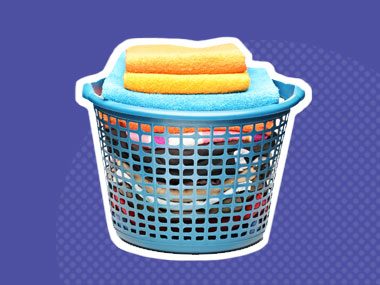
Your clean laundry
A load of underwear will transfer at least 100 million E. coli bacteria—the culprit behind diarrhea—to the washing machine, which becomes a breeding ground that can contaminate other clothing. With a front-loading machine, it's worse; water settles at the bottom and creates the moist environment bacteria loves. Your toilet seat, on the other hand, is too dry to support a very large bacterial population.Clean it:Disinfect your machine by washing a load of whites with bleach first, or cleaning your washer with bleach at least once a month (pour 2 cups of bleach into the detergent compartment, and run empty on the hottest cycle before wiping dry; leave the door open after). To avoid spreading bacteria, wash underwear separately with hot water and a color-safe bleach replacement.

Your smartphone or tablet
In a 2013 study, British researchers swabbed 30 tablets, 30 phones, and an office toilet seat. The tablets had up to 600 units per swab of staphylococcus (also known as staph, which can cause severe stomach sickness) and the phones had up to 140 units. The typical toilet seat had less than 20 units. Another uncomfortable detail: In a 2011 survey, 75 percent of Americans said they use their smartphones while on the toilet to text, email, and talk. It’s not just teenagers—91 percent of Gen Y responders said they used their phone on the toilet, as did 80 percent of Gen X and 65 percent of Boomers.Clean it:Reduce your exposure to germs by cleaning your electronic screens with screen wipes or a damp, soft cloth—or leaving them out of the bathroom in the first place.
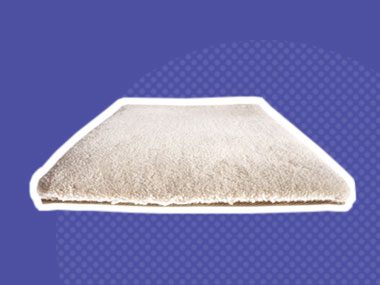
Your carpet
Fun fact: Bacteria love munching on dead skin cells. Considering that the average person sheds about 1.5 million every hour, that turns your rugs into a fine dining experience when you add food particles, pet dander, pollen, and other bits. About 200,000 bacteria live in each square inch of carpet (nearly 700 times more than on your toilet seat), including E. coli, staphylococcus, and salmonella.Clean it:Since your vacuum cleaner can’t reach to the bottom of the carpet, hire a company to deep clean at least once a year.

Your faucet handles
Your bathroom faucet handle can have 21 times the bacteria of your toilet seat. Even worse—your kitchen faucet handles can harbor 44 times the bacteria of your toilet seat.Clean it:Disinfect and clean regularly along with the rest of your sink to make sure washing your hands isn’t making you dirtier.
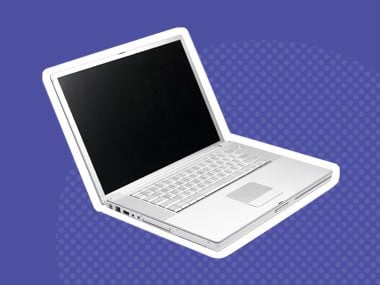
Your computer keyboard
Clicking away at your computer in between bites of lunch may have led to the last “office bug” you picked up. When British researchers swabbed 33 keyboards in a London office, they found that they harbored up to five times the germs of a toilet seat. In 2007, a stomach flu outbreak at a Washington, D.C. elementary school struck more than 100 people, and may have spread through unclean computer equipment like keyboards, according to the U.S. Centers for Disease Control and Prevention.Clean it:Wash hands, and surfaces, often.

Your handbag
It goes with everything, including germs. When British researchers studied 25 handbags, they found that the average handbag is three times dirtier than an office toilet seat. Handbags used regularly were 10 times dirtier. Handles carried the most bacteria, but even items inside the bag were grimy—hand and face creams were the dirtiest, along with lipstick and gloss. Stomach flu viruses have been traced back to reusable grocery bags, too.Clean it:Keep your bags off the ground, and regularly wash cloth bags when possible. For plastic or leather bags, use disinfectant wipes.
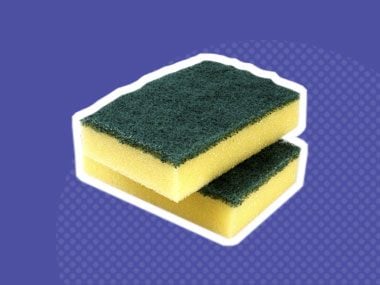
Your kitchen cloth or sponge
When Arizona researchers collected 1,000 dishcloths and sponges in kitchens, they found that 10 percent contained salmonella. Each square inch of their surfaces contains about 134,630 bacteria, 456 times the number on a toilet seat. Dishcloths and sponges harbor the largest amount of E. coli and other fecal bacteria in the average home, mostly because they aren’t replaced as often as they should.Clean it:Each week, toss dishcloths in the washing machine and sponges in the dishwasher, or heat in the microwave (while damp) for 30 seconds.